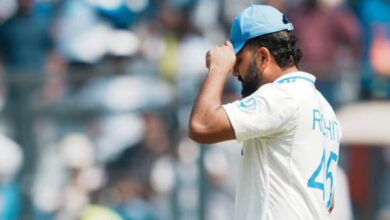The trivela: The outside of the boot shot perfected the Portuguese, first Quaresma and now Cancelo

Brazil talks football as lyrically as it plays.
So, a shot or a cross taken with the outside of the boot, which the English unimaginatively call ‘outside-of-the-boot shot’, is eloquently described as dos tres dedos. With three toes. Think no further than Roberto Carlos’ curling banana kick against France in 1997.
The Brazilians have inspired names for one of football’s most aesthetic skills in other countries as well. The Russians, for instance, call it a Shvedka. A Swede. It’s believed the term entered Russia’s football glossary after the 1958 World Cup, author Tom Williams notes in his quirky and thoroughly enriching book ‘Do you speak football?’, where ‘Brazilian players such as Didi demonstrated their mastery of the technique’.
In Nigeria, they’ve let their imagination flow even more, calling it a ‘NASA pass’ to emphasise – Williams writes – the technique ‘of such difficulty it’s imagined to require the precision of a NASA engineer’.
Manchester City’s Joao Cancelo celebrates scoring their first goal. (REUTERS/Phil Noble)
Depending on where you are in the world, the complex art of bending the football with the outside of the boot has its own localised versions as well as practitioners. There are no better exponents, however, of it than the Portuguese, who rechrened the technique ‘trivela’, a name that now has its rightful place in football glossary.
And at present, few players are as good as Portugal and Manchester City’s Joao Cancelo in converting the art form into a deadly weapon that’s leading, directly or indirectly, into goals week after week.
Against Southampton the Premier League last Saturday, Cancelo opened the scoring with a sensational left-footed strike and then teed up Erling Haaland for the English champions’ fourth goal. But more than the goal or the ass, it was Cancelo’s outrageous ‘trivela volley’ cross that stood out.
In the 13th minute of the match, when both teams were goalless, Cancelo received a pass on the left wing and without looking up even once, flicked the ball on the volley with the outside of his right boot to Riyad Mahrez who was running into the box from the opposite flank. The cross sailed over the defence and landed straight on Mahrez’s dangerous left foot but his first-time shot ballooned over the crossbar.
This wasn’t the first time Cancelo had tried this audacious pass; his earlier renditions have had lethal impacts.
Last month, after City’s Champions League win against Borussia Dortmund, all the talk post-match centred on Erling Haaland. Or more specifically, on that goal. The one where the City forward had Shaolin Soccer-ed Dortmund: sneaking in between two defenders, his movement more instinctive than regimented, going airborne and raising his right leg up to the head, which would’ve have been easy for the 6’3” tall forward, to meet the cross and karate kick it past the goalkeeper.
Manchester City’s Joao Cancelo scores their first goal. (Reuters)
The finish reminded Pep Guardiola of Johann Cruyff and a goal he scored at Camp Nou against Atletico Madrid. But the City manager was more in awe of Cancelo’s cross that led to the goal: a beautiful trivela from the left wing that curled just enough to find Haaland inside a crowded Dortmund box.
‘Ma-gis-tral!’ screamed one Portuguese headline, the pauses adding to the drama of the moment. On Twitter, ‘wow’ Cancelo was a momentary trend.
Unlike the one he executed on Saturday against Southampton, Cancelo’s trivela against Dortmund was comfortably delivered when the ball was stationary. It’s this ability that makes the 28-year-old one of the most dangerous wing-backs for club and country.
And these were also signs of a player who is at the peak of his powers and one who is acutely aware of it. In a Manchester City documentary on their EPL title-winning run last season, a friendly exchange between Cancelo and Ruben Dias reveals the former’s mindset, especially in relation to this technique.
“My trivela is better than Cancelo’s,” Dias says, mocking his City and Portugal teammate. Cancelo instantly replies: “After Quaresma, I am the best.”
Cancelo, of course, was referring to Portuguese winger Ricardo Quaresma, unanimously hailed as the finest exponent of the trivela for the last decade-and-a-half, turning the skill that was once considered frivolous and a sign of not being able to use the weaker foot into one of football’s most delicate and beautiful techniques.
Quaresma’s signature move would be to cut in from the right wing and use the outside of his dexterous right foot to either cross the ball or curl it into the far corner. His first international goal, in a Euro 2008 qualifier, came like that against Belgium – picking up a pass from Criano Ronaldo on the edge of the box on the right, taking an instep and with the outside of the right boot, effortlessly curling the ball into the far post, leaving the goalkeeper stranded.
Ten years later, against Iran at the 2018 World Cup, Quaresma scored a goal. In between those two strikes were dozens of trivelas that left defenders and goalkeepers in apparent disbelief.
Williams writes his book about how Quaresma belonged to a generation of skilled trivelas in the Portuguese league – from Serbian winger Ljubinko Drulovic, who was inspired Diego Maradona, to Brazilian right-back Heitor. Rivellino, Branco and Carlos are some of the other Brazilians who masterfully used the ‘wrong side’ of the boot.
Quaresma, however, remains the king of trivelas. And now, Cancelo is carrying forward the tradition.







